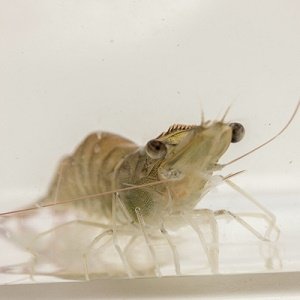New research from WorldFish undertaken as part of the CGIAR Research Program on Fish Agri-food Systems (FISH) identifies means to lessen the use of antimicrobials, such as antibiotics, antivirals, and antiprotozoals, in aquaculture. Intensification of fish farming systems has resulted in higher risks of disease outbreaks and a subsequent trend towards more antimicrobial use the report says.
Global attention has focussed on the overuse of antimicrobials and consequent antimicrobial resistance (AMR) which may compromise the treatment of bacterial infections in the target species as well as in humans. The spread of AMR has been classified by the World Health Organization (WHO) as one of the major threats for the human population of the twenty-first century.
Antimicrobial use can be mitigated through farmer training, spatial planning, assistance with disease identification, applying better management practices at farm level and stricter regulations notes the study. And, national governments and international organizations could, in turn, assist with disease-free fish seed and vaccines, enforce rigid monitoring of the quantity and quality of antimicrobials used by farmers, and minimize antimicrobial residues in the farmed species and in the environment.
Michael Phillips, Director of Science and Aquaculture, WorldFish and Program Director FISH: “With aquaculture, the fastest growing food sector in the world, it will be critical to ensure that growth is coupled with attention to the use of antimicrobial drugs. One issue for researchers to understand is that there are no reliable data on global use of antimicrobials in fish farming. A global approach to this issue is necessary, targeting fish production systems and products aimed for both for domestic and export markets.”
The study – Unpacking factors influencing antimicrobial use in global aquaculture and their implication for management: a review from a systems perspective – recommends urgent internationally coordinated action to better understand the scale of the problem and notes a need to integrate risk assessment as an alternative means to reduce disease.
Evidence of AMR in humans linked to antimicrobial use in aquaculture is building with examples given in the study. Antimicrobial use in aquaculture differs from that in livestock farming due to aquaculture’s greater diversity of species and farming systems, alternative means of application, and less consolidated farming practices. Over 600 species are known to be under cultivation and this diversity could provide resilience, but it also adds complexity with a greater number of pathogens for which antimicrobials has often been the first line of defence for many farmers.
Reference (open):
Stay Always Informed
Join our communities to instantly receive the most important news, reports, and analysis from the aquaculture industry.
Patrik J. G. Henriksson, Andreu Rico, Max Troell, Dane H. Klinger, Alejandro H. Buschmann, Sonja Saksida, Mohan V. Chadag, Wenbo Zhang. 2017. Unpacking factors influencing antimicrobial use in global aquaculture and their implication for management: a review from a systems perspective. Sustainability Science, pp 1–16.
https://link.springer.com/article/10.1007/s11625-017-0511-8
Source: WorldFish
Editor at the digital magazine AquaHoy. He holds a degree in Aquaculture Biology from the National University of Santa (UNS) and a Master’s degree in Science and Innovation Management from the Polytechnic University of Valencia, with postgraduate diplomas in Business Innovation and Innovation Management. He possesses extensive experience in the aquaculture and fisheries sector, having led the Fisheries Innovation Unit of the National Program for Innovation in Fisheries and Aquaculture (PNIPA). He has served as a senior consultant in technology watch, an innovation project formulator and advisor, and a lecturer at UNS. He is a member of the Peruvian College of Biologists and was recognized by the World Aquaculture Society (WAS) in 2016 for his contribution to aquaculture.




